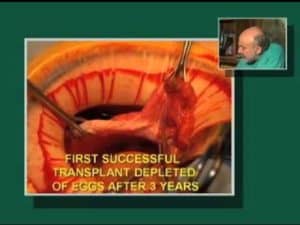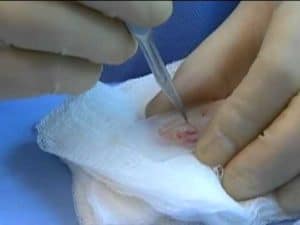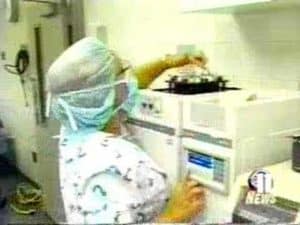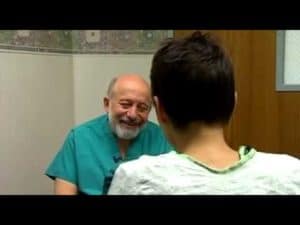Summary of Berlin International Congress March 21-23, 2013, Organized by Dr. A. Arav (Israel), Dr. A. Cobo (Spain), Dr. J. Donnez (Belgium), Dr. N. Noyes (USA), Dr. P. Patrizio (USA), Dr. Z. Shoham (Israel), Dr. G. Vajta (Australia), and Dr. Sherman Silber (USA)
April 19, 2013
This was a unique gathering in Europe of the leading scientists and clinicians working on cryopreservation for fertility preservation, stem cell biology to produce eggs and sperm (gametes) and tissue freezing and transplantation. This field of reproduction is looming as the major solution to the moderation of the explosive world wide infertility epidemic, as a method to maintain fertility into the later years when nowadays most people are ready to have a child, but can’t because of the aging oocyte, or the absence of spermatogenesis. The results of this very successful meeting indicate just how much progress we have made in pursuing this holy grail, of extending the reproductive lifespan, creating sperm and eggs from ordinary skin cells, freezing and freeze drying of tissue and cells, ovarian tissue freezing, and egg freezing.

One particular speaker of interest was Dr. Katsuhiko Hayashi who discussed making eggs and sperm from IPS cells derived from skin cells was as clear a view into the future as ever imaginable. First he made IPS cells in the mouse, and grew them to epiblast. He was able to derive from these differentiated epiblast cells primordial germ cells which he calls PGCLC’s. These cells if injected into testis, would find their niche and develop into sperm, relatively easily. The eggs are more difficult. PGCLCs if injected into the ovarian bursa of either fetal or adult mice, then develop into oocytes. Eventually these stem cell derived sperm and stem cell derived oocytes, after IVF develop into embryos that result in live and healthy mouse pups. Much work remains over the next decade to make such research clinically applicable, but it is certainly a proof of an amazing concept.
Dr. Sherman Silber discussed ovarian freezing and transplantation for cancer patients with very optimistic and fairly robust results. He discussed the remarkably long period of function of these frozen or fresh grafted slices of ovarian tissue, and the benefit of not only fertility and pregnancy, but also of long term hormonal function preventing the misery of premature ovarian failure. Dr. Silber reported 14 live births. Dr. Silber also noted Dr. Andersen’s group’s work showing the lack of viable leukemia cells in the ovarian cortex even if there are positive PCR markers, so long as the ovary was removed before the bone marrow transplant, but after the initial remission on chemotherapy. This removes much of the fear of transplanting cancer cells back to patients who have had ovarian freezing as their method of fertility preservation for cancer, even for leukemia. It even might be a wise choice for young girls who have to put off childbearing to have an ovarian biopsy frozen at a young age for the same reason. Time can be more devastating than cancer Dr. Silber emphasized. His findings and those of Dr. Andersen, Dr. Donnez, and the Israeli’s, emphasizes that ovary tissue freezing and transplantation are not experimental. There are over 28 healthy babies born to cancer patients from frozen ovarian tissue and 40 altogether from ovary transplants.
Dr. Arav from Israel showed his unidirectional solification method of freezing large pieces of issue and even whole ovaries, and then went on to shock everyone with his plan to lyophilize this tissue and eggs, so that like powder they can be stored in envelopes instead of in huge cryotanks.
Dr. Masashigi Kuwayama, the inventor of modern egg and embryo vitrification, a system that works popularly and with great success and is used in virtually every IVF clinic in the world, demonstrated a better system for egg freezing with virtually 100% egg survival. In Japan today 43% of IVF babies are from frozen embryos. Any honest egg vitrifier knows that even vitrified eggs with current systems are less than fully effective. Kuwayama has made a medium that is much more viscous and less toxic, and a loading system that is less error prone. Egg freezing NOW has truly been perfected.
Dr. Cobo gave her summary of results in a huge series of vitrified frozen eggs used for a donor egg bank. Without Kuwayama’s new technique; however, frozen eggs may still not be as good as fresh according to several new studies she quoted. But Kuwayama seems to have now solved that problem (Cryotech- Tokyo).
Dr. Meirow from Israel spoke about ovarian tissue freezing and pointed out how many eggs are lost from the slow freezing process (about 50-60%), and also from transplantation. He and Dr. Silber have both shown that there is no loss from ischemia time if the surgery is performed properly. But there is a rapid recruitment and follicle loss from the thinness of the stromal cortical tissue. But that does not preclude long duration of function of these grafts, and at least half of his patients have gotten pregnant emphasizing that this is hardly an experimental procedure, similar to Dr. Silber’s lecture.
Dr. Donnez presented his six pregnancies from frozen ovary grafts, and estimated a denominator of about 20%, still hardly to be considered experimental when the alternative is zero percent pregnancy.
Dr. Crowe discussed cryopreservation in general and for blood products and prefers trehalose to sucrose since it is more stable, both for vitrification or slow freeze. There were a variety of other fascinating cryopreservation talks including Dr. Kostal from the Czech Republic on fruit flies, hibernating animals, and larva. Dr. Loi discussed an insect call the “tardigrade” which can be totally freeze dried like a piece of paper, and then come to life again when water is added, similar to Dr. Arav’s studies. Everyone seems to think trehalose is better than sucrose for freezing.
Dr. Dinnyes from Hungary discussed cryopreservation of animal stem cells with a simple “for” method commonly used to preserve lymphocytes for later establishing cell lines. Dr. Galli of Italy discussed the well-known difficulty of IVF in horses.
Dr. Noyes of the USA discussed the optimal methods of egg retrieval and freezing to preserve fertility in cancer patients and for social reasons as well, and noted no difference in pregnancy rate for different cleavage stages, but prefers almost always blastocysts now. However she did point out a homozygous twin rate of only 1.2% with cleavage, but 2.6% with blastocysts. Of 197 cycles, she reports 38% have PGS normal blastocysts and if PGS is normal, there is a 58% pregnancy rate. She has abandoned slow freeze and uses vitrification exclusively, and prefers blastocyst transfer to cleavage stage transfer, although there are no controlled studies to verify this is a better approach for the IVF patient in general. I am not sure this issue is settled regarding blastocyst versus cleavage and regarding PGS versus no PGS. It needs further study.
Concluding summaries were made by Dr. Silber, summarizing the meeting and everyone thanked Dr. Shoham for being the major organizer.
It was a great ground breaking meeting.
Dr. Sherman Silber





